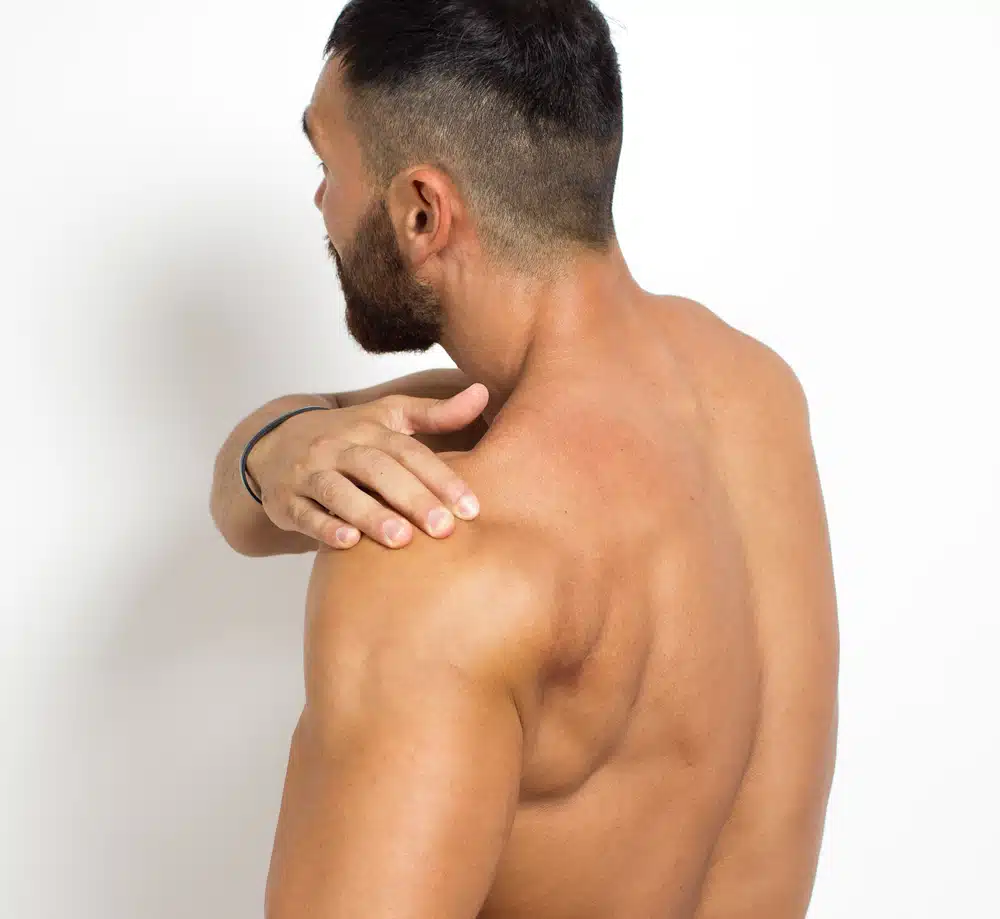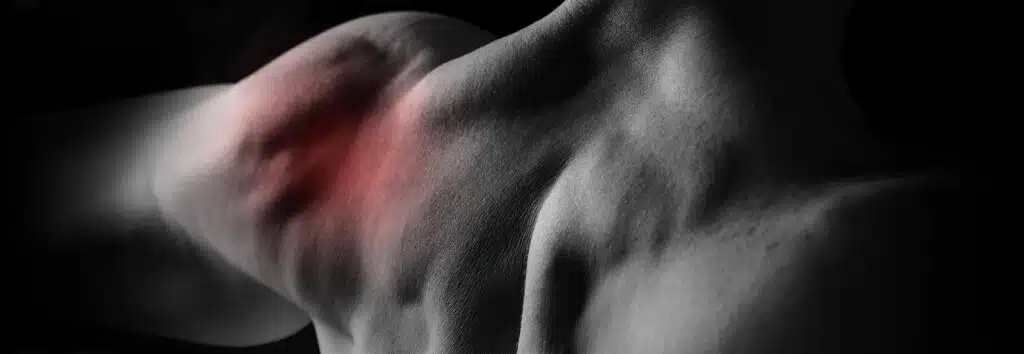This website uses cookies so that we can provide you with the best user experience possible. Cookie information is stored in your browser and performs functions such as recognising you when you return to our website and helping our team to understand which sections of the website you find most interesting and useful.


It’s essential for patients with shoulder injuries or chronic shoulder pain to work closely with our Orthopedic team and follow a comprehensive treatment plan that meets their specific medical needs and goals for the best recovery.

Shoulder stabilization surgery helps restore stability to the shoulder, particularly in the areas of recurring shoulder dislocations or subluxation. Shoulders are inherently prone to instability due to their extensive range of motion and relatively shallow socket (glenoid). Shoulder stabilization procedures are performed to correct structural abnormalities, strengthen the supporting soft tissues, and prevent reoccurring shoulder dislocation or instability.
Some common types of shoulder stabilization procedures:
Bankart Repair: This procedure is performed to repair a Bankart lesion, a tear or detachment of the shoulder joint’s labrum (a cartilage ring). The labrum helps deepen the socket of the shoulder joint and provides stability. During a Bankart repair, the torn labrum is reattached to the rim of the glenoid using sutures or anchors to restore stability to the joint.
Capsular Shift (Capsulorrhaphy): Capsular shift surgery involves tightening or plicating the loose or stretched capsule (the fibrous tissue surrounding the shoulder joint) to reduce excessive joint laxity and prevent recurrent dislocations. This procedure is often performed in conjunction with other stabilization techniques, such as Bankart repair or Hill-Sachs remplissage.
Latarjet Procedure: The Latarjet procedure is a more extensive surgery that involves transferring a piece of bone and attached muscle (coracoid process and conjoint tendon) from the scapula to the front of the glenoid to create a bony block. This bone block is a barrier to prevent the humeral head (ball of the shoulder joint) from dislocating anteriorly.
Hill-Sachs Remplissage: Hill-Sachs lesions are defects or indentations on the humeral head caused by repeated dislocations. In Hill-Sachs remplissage, the defect is filled with soft tissue (typically the infraspinatus tendon) to prevent engagement of the lesion with the glenoid rim during shoulder motion, reducing the risk of recurrent instability.
Open or Arthroscopic Stabilization: Shoulder stabilization procedures can be performed using either an open surgical approach with a larger incision or an arthroscopic approach with smaller incisions and specialized instruments. Arthroscopic stabilization offers advantages such as less tissue trauma, reduced postoperative pain, and faster recovery compared to open surgery.
If you are experiencing pain in your shoulders and need medical assistance, please contact Dr. Stephen W. Pournaras and our professional medical staff can help you recover by simply contacting us today.
A shoulder dislocation occurs when the upper arm bone (humerus) pops out of the shoulder socket (glenoid) due to extreme force or trauma. The shoulder is the most mobile joint in the body, allowing for a wide range of motion, but this mobility also makes it more susceptible to dislocations. There are several ways a shoulder dislocation can happen:
Traumatic Injury: The most common cause of shoulder dislocation is a traumatic injury, such as a fall onto an outstretched arm, a direct blow to the shoulder, or a forceful impact during sports or recreational activities. These types of injuries can force the humerus out of the socket, resulting in a dislocation.
Sports Injuries: Shoulder dislocations are frequently seen in contact sports like football, rugby, hockey, and wrestling, as well as in activities that involve overhead movements such as volleyball, basketball, and gymnastics. During these sports, sudden twists, falls, or collisions can lead to shoulder dislocations.
Motor Vehicle Accidents: High-velocity motor vehicle accidents can cause significant forces to be transmitted to the shoulder joint, resulting in dislocation. The impact of the collision can cause the shoulder to be forcefully driven out of its socket.
Seizures or Convulsions: In some cases, shoulder dislocations can occur during seizures or convulsions, mainly if the patient falls onto the shoulder or experiences violent muscle contractions that force the humerus out of the socket.
Congenital Conditions: Some patients may have congenital or developmental abnormalities in the structure of the shoulder, such as a shallow or malformed socket (glenoid), that predispose them to recurrent shoulder dislocations, even with minimal trauma.
Repetitive Strain: Overuse or repetitive strain on the shoulder, such as repetitive throwing motions in baseball or swimming, can lead to shoulder instability and an increased risk of dislocation, particularly in individuals with underlying laxity or weakness in the supporting structures of the shoulder.
Once a shoulder dislocation occurs, the ligaments, tendons, and other soft tissues surrounding the joint may be stretched or torn, increasing the risk of recurrent dislocations in the future. Prompt medical evaluation and treatment are essential to reduce pain, realign the joint, and prevent further damage to the shoulder structures.
Symptoms of A Shoulder Dislocation:
The symptoms of a shoulder dislocation can vary depending on the severity of the injury and whether any associated damage has occurred to surrounding structures. However, common symptoms of a shoulder dislocation include:
Severe Pain: A sudden onset of intense pain in the shoulder area is a hallmark symptom of a shoulder dislocation. The pain may be felt in the shoulder, down the arm, or into the neck.
Visible Deformity: In some cases, a dislocated shoulder may cause a noticeable deformity or abnormal appearance of the shoulder. The humeral head (ball of the shoulder joint) may appear displaced or out of position, mainly if the dislocation is severe.
Swelling and Bruising: Swelling and bruising may develop rapidly around the shoulder following a dislocation. The soft tissues surrounding the joint may become swollen and tender to the touch, and bruising may appear due to bleeding under the skin.
Limited Range of Motion: After a shoulder dislocation, the ability to move the affected arm may be significantly limited. Attempting to move the arm may exacerbate pain, and specific movements, such as raising the arm or rotating it outward, may be particularly restricted.
Numbness or Tingling: Numbness, tingling, or weakness may occur in the affected arm or hand, especially if the dislocation has caused nerve compression or damage. This can result from stretching or compression of the nerves around the shoulder.
Instability or Feeling of “Looseness”: Some patients may experience a sensation of instability or “looseness” in the shoulder after a dislocation, particularly if the joint remains partially dislocated or if there is associated damage to the ligaments and other supporting structures.
Difficulty Using Your Arm: Everyday activities such as lifting, reaching, or carrying objects may become difficult or impossible due to pain and limited range of motion in the affected arm.
It’s essential to seek medical attention promptly if you suspect a shoulder dislocation, as early treatment can help alleviate pain, realign the joint, and prevent further complications.
Non-surgical treatments for shoulder dislocation focused on reducing pain, inflammation, and swelling and facilitating the healing process. While some shoulder dislocations may require surgery, many can be managed conservatively, especially if it’s a first-time dislocation or is promptly reduced without complications.
Non-surgical treatments for shoulder dislocation:
Closed Reduction: In many cases, our medical team can manually manipulate the displaced humerus (upper arm bone) back into its normal position in a closed reduction procedure. This is typically performed in the emergency room or clinic under local or intravenous sedation. After the reduction, the shoulder may be immobilized in a sling or shoulder immobilizer to prevent further movement and allow the surrounding tissues to heal.
Pain Management: Over-the-counter pain medications such as acetaminophen (Tylenol) or nonsteroidal anti-inflammatory drugs (NSAIDs) like ibuprofen (Advil, Motrin) or naproxen (Aleve) can help alleviate pain and reduce inflammation. Prescription pain medications may be prescribed for more severe pain.
Ice Therapy: Applying ice packs to the shoulder for 15-20 minutes at a time, several times a day, can help reduce pain and swelling. Ice therapy should be started as soon as possible after the injury and continued for the first 48-72 hours.
Immobilization: Immobilizing the shoulder with a sling or shoulder immobilizer helps prevent further movement and supports the shoulder as it heals. The immobilization duration depends on the dislocation’s severity and the healthcare provider’s recommendations, but it typically lasts for a few weeks.
Physical Therapy: Once the acute pain and inflammation subside, physical therapy may be initiated to restore range of motion, strength, and function to the shoulder. Physical therapy exercises may include gentle stretching, strengthening exercises, and range of motion exercises tailored to the patient’s specific needs and stage of recovery.
Activity Modification: Activities that put stress on the shoulder, such as overhead movements, heavy lifting, or contact sports, should be avoided or modified to prevent further injury while the shoulder heals. Our medical team can guide patients to a gradual return to normal activities to prevent reinjury.
Surgical intervention may be necessary when non-surgical treatments are ineffective or inappropriate for managing shoulder dislocations.
Surgical options for shoulder dislocation focus on repairing or reconstructing the damaged structures in the shoulder to restore stability and reduce the risk of recurrent dislocations.
Surgical options for shoulder dislocation:
Bankart Repair: A Bankart repair is a surgical procedure to repair a Bankart lesion, which is a tear or detachment of the labrum (a ring of cartilage) in the shoulder joint. During the procedure, the torn labrum is reattached to the rim of the glenoid (shoulder socket) using sutures or anchors. This helps restore stability to the shoulder and reduces the risk of recurrent dislocations.
Capsular Shift (Capsulorrhaphy): Capsular shift surgery involves tightening or plicating the loose or stretched capsule (the fibrous tissue surrounding the shoulder joint) to reduce excessive joint laxity and prevent recurrent dislocations. This procedure may be performed in conjunction with other stabilization techniques, such as Bankart repair.
Latarjet Procedure: The Latarjet procedure involves transferring a piece of bone and attached muscle (coracoid process and conjoint tendon) from the scapula to the front of the glenoid to create a bony block. This bone block acts as a barrier to prevent the humeral head (ball of the shoulder joint) from dislocating anteriorly. The Latarjet procedure is often used to treat recurrent anterior shoulder instability, particularly in cases of bone loss or failed previous surgeries.
Remplissage: Hill-Sachs lesions are defects or indentations on the humeral head caused by repeated dislocations. In remplissage surgery, the defect is filled with soft tissue (typically the infraspinatus tendon) to prevent engagement of the lesion with the glenoid rim during shoulder motion, reducing the risk of recurrent instability.
Open Reduction Internal Fixation (ORIF): In cases of complex or comminuted fractures involving the shoulder joint, open reduction internal fixation may be performed to realign the fractured bones and stabilize the joint using plates, screws, or wires.
Arthroscopic Stabilization: Arthroscopic stabilization involves using minimally invasive techniques and specialized instruments to repair or reconstruct the damaged structures in the shoulder joint, such as the labrum, capsule, or ligaments. This approach offers advantages such as smaller incisions, less tissue trauma, and faster recovery compared to open surgery.
The choice of surgical technique depends on factors such as the underlying cause of shoulder instability, the severity of the injury, the presence of associated injuries, and the patient’s age and activity level. Rehabilitation and physical therapy are typically an integral part of the postoperative recovery process to restore strength, range of motion, and function to the shoulder.
Make Your Appointment Today
Fair Oaks Orthopedics – Fairfax,VA


